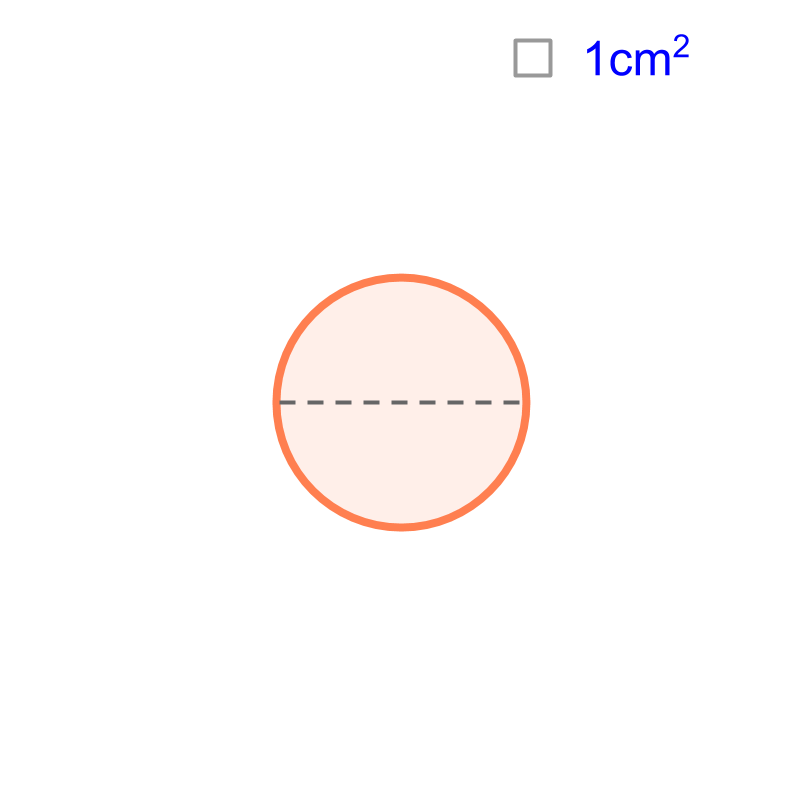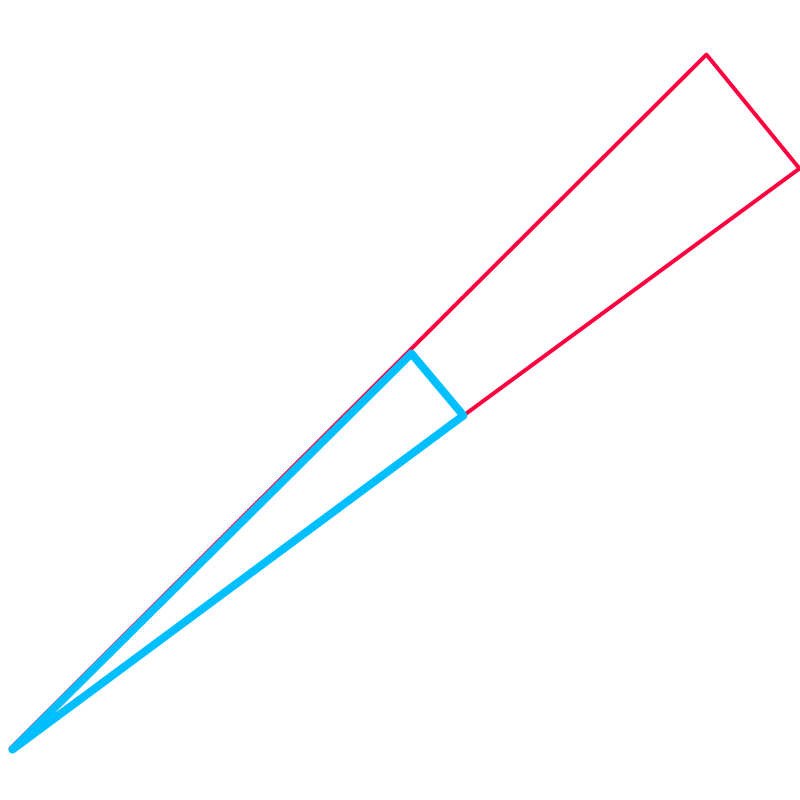
what you'll learn...
Overview
Circumference of a Circle: :
Circumference of a circle of cm diameter is computed to be a decimal value that does not end or repeat. It is calculated to be by approximating the circle to infinitesimally small triangular pieces.
 Circumference and
is the radius of the circle
Circumference and
is the radius of the circle
is the diameter of the ci
recap
We learned about measurement of objects in real-life, or a line segment of arbitrary length. Some of the learnings are:
• The length of an object can be an integer value in the unit of measurement. eg: cm
• The length of an object need not be exactly an integer value in the unit of measurement. It can be given in smaller unit of length. eg: Length of a pencil is or or cm
• The length of an object can be a decimal number in which the decimals do not repeat or do not end. The practical measure of the length is limited by the accuracy of the instrument used in measuring. eg: Length of a pencil is cm.
Similarly, the circumference of a circle of cm diameter is a decimal number in which the decimals do not repeat or do not end. That number is approximately cm or cm.
 The circumference of a circle of diameter cm is
The circumference of a circle of diameter cm is
cm
=approximately cm
= approximately cm
Circumference of a circle of diameter cm is represented as . For a circle of diameter cm or radius cm, the circumference is or cm.
The circumference of a circle of cm radius is " cm"
Approximately
The above was at beginner level understanding. Now, let us learn how to calculate the circumference of a circle.
calculating

Consider the circle given in the figure. The diameter of the circle is cm. We can visualize the circle as a combination of isosceles-triangles to find sum of the bases as approximate circumference.

Consider finding circumference of a circle spanned with triangles as illustrated in the figure. 
The base of a triangle is an approximation to the corresponding arc on the circle . The accuracy of the calculated circumference value can be increased if the triangle is made thinner (angle between equal sides is smaller).
solution for unit circle
The circumference of a circle is calculated by one of many methods involving equivalence and approximation. For now, consider the diameter to be cm. The circumference of the circle is calculated to be by approximating the circle to infinitesimally small triangular pieces.
Remember we studied that length of a line-segment can be measured finer and finer to an accurate value -- a decimal number that does not terminate and does not repeat. Similarly, the circumference of a circle is a decimal number that does not terminate and does not repeat.
The circumference of a circle of diameter cm is commonly approximated to a value or .
To represent the accurate decimal value, the number is represented with the symbol . It is an irrational number (a decimal number that does not end or repeat).
solution for any circle

The circumference of a circle with diameter cm is computed as a value represented with .
What is the circumference of a circle with diameter cm or cm? Will there be more numbers defined like ?
The question is answered with some geometrical calculations. Consider one piece of the triangle that was used to calculate circumference of a circle of diameter cm. The triangle is shown in blue color in the figure.
The corresponding triangle for a circle of cm is shown in red. Note that the triangles overlap and the blue triangle is shown on top of the red one.
The corresponding angles of these two triangles are equal and thus the triangles are similar.
The property of similar triangles is that, the ratio of the sides are constant.
The isosceles sides of blue triangle are cm and the base is .
The isosceles sides of red triangles are cm and the base is .
As per property of similar triangles,
This means, the base of the triangles from larger circle are times the base of triangles from smaller circle.
This implies that, the circumference of larger circle of cm diameter is times the circumference of the smaller circle.
The circumference of the smaller circle of cm diameter is .
This implies that circumference of the larger circle is
Summarizing the derivation
Circumference of a circle of cm diameter is computed to be a decimal value that does not end or repeat. That accurate value is represented by the symbol and approximate value of that is and .
Circumference of a circle of cm diameter is computed to be times the circumference of the circle of cm diameter.
Thus the generic formula for the circumference of a circle is or .
What is the circumference of a circle of cm diameter?
The answer is " cm"
summary
Circumference of a Circle: :
Circumference of a circle of cm diameter is computed to be a decimal value that does not end or repeat. It is calculated to be by approximating the circle to infinitesimally small triangular pieces.
 Circumference and
is the radius of the circle
Circumference and
is the radius of the circle
is the diameter of the circle
Outline
The outline of material to learn Mensuration : Length, Area, and Volume is as follows.
Note 1: click here for the detailed overview of Mensuration High
Note 2: click here for basics of mensuration, which is essential to understand this.
• Basics of measurement
→ Summary of Measurement Basics
→ Measurement by superimposition
→ Measurement by calculation
→ Measurement by equivalence
→ Measurement by infinitesimal pieces
→ Cavalieri's Principle (2D)
→ Cavalieri's Principle (3D)
• Perimeter & Area of 2D shapes
→ Circumference of Circles
→ Area of Circles
• Surface area & Volume of 3D shapes
→ Prisms : Surface Area & Volume
→ Pyramids : Surface Area & Volume
→ Cone : Surface Area & Volume
→ Sphere : Surface Area & Volume
• Part Shapes
→ Understanding part Shapes
→ Circle : Sector and Segment
→ Frustum of a Cone